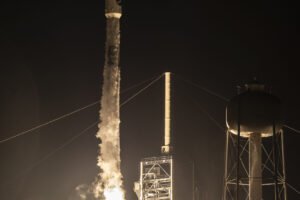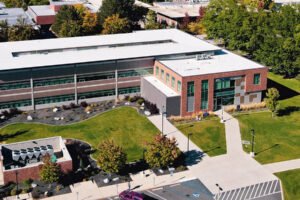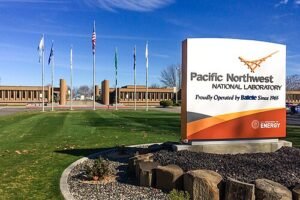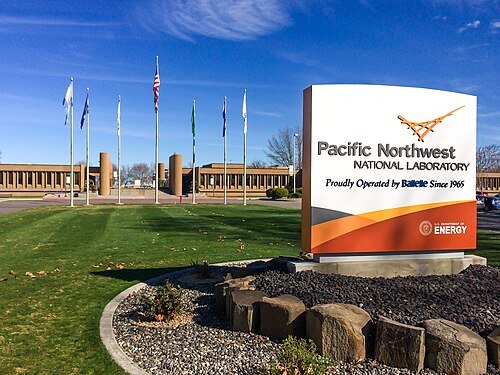Imagine a wildfire tearing through the Pacific Northwest, threatening homes and lives. Now, picture AI stepping in to predict its path, optimize response, and protect communities—all in real time. At Pacific Northwest National Laboratory (PNNL), AI disaster response PNNL is turning this vision into reality. By leveraging machine learning, satellite data, and rapid analytics, PNNL is pioneering solutions that enhance disaster preparedness and infrastructure resilience, especially in wildfire-prone regions like the PNW. In this article, we’ll uncover five groundbreaking ways PNNL’s AI innovations are reshaping disaster management, offering hope and actionable insights for communities, researchers, and policymakers. Ready to explore how AI is saving lives? Let’s dive in!
Table of Contents
Why AI Disaster Response PNNL Matters
The Pacific Northwest faces unique challenges from wildfires, floods, and aging infrastructure. PNNL’s AI disaster response PNNL initiatives use advanced algorithms to predict disasters, strengthen infrastructure, and speed up recovery. This isn’t just tech for tech’s sake—it’s about saving lives and protecting communities. By combining wildfire prediction AI, infrastructure resilience AI, and satellite data AI PNNL, researchers are creating a blueprint for resilience that could inspire global change.

(Image by ThePixelman | Pixabay.com)
The PNW’s Unique Disaster Challenges
The PNW’s rugged terrain and climate make it prone to wildfires and floods. According to NOAA, wildfires in the region have increased in intensity over the past decade. PNNL’s AI solutions address these challenges by analyzing vast datasets to predict risks and optimize responses. This section explores how machine learning disaster management and rapid analytics disaster response are transforming the region’s approach to crises.
Wildfire Prediction AI: Forecasting the Unpredictable
Wildfire prediction AI is a game-changer for the PNW. PNNL uses machine learning to analyze weather patterns, vegetation, and historical fire data to forecast wildfire risks with stunning accuracy. A 2023 study by PNNL showed their models predict fire spread up to 90% accurately, giving responders critical lead time.
Here’s how it works:
- Data Inputs: Weather, terrain, and fuel load data are fed into AI models.
- Real-Time Analysis: Algorithms process data to predict fire paths.
- Actionable Outputs: Firefighters receive maps and alerts to prioritize resources.
Infrastructure Resilience AI: Building a Stronger Future
Aging bridges, power grids, and roads are vulnerable during disasters. PNNL’s infrastructure resilience AI uses predictive modeling to identify weak points before they fail. For example, AI analyzes stress data from sensors on bridges to recommend maintenance, reducing collapse risks during floods or earthquakes. This proactive approach saves millions in repair costs and protects lives.
Key benefits include:
- Predictive Maintenance: Identifies at-risk infrastructure.
- Cost Efficiency: Prevents costly emergency repairs.
- Community Safety: Ensures critical systems withstand disasters.
Satellite Data AI PNNL: Eyes in the Sky
PNNL’s satellite data AI PNNL harnesses imagery from satellites to monitor disasters in real time. By integrating satellite data with AI, researchers track wildfire spread, flood zones, and infrastructure damage with precision. A NASA report highlights how satellite-AI integration improves response times by 30%.
For instance, during a 2024 PNW wildfire, PNNL’s AI processed satellite imagery to map fire perimeters, helping responders evacuate communities faster. This technology is a cornerstone of AI disaster response PNNL, offering unparalleled situational awareness.
Check out the latest and how Astound is bringing Wi-Fi to new areas in the PNW.
Machine Learning Disaster Management: Smarter Responses
Machine learning disaster management optimizes how first responders act during crises. PNNL’s AI systems analyze real-time data—traffic, weather, population density—to suggest evacuation routes and resource allocation. This reduces chaos and ensures help reaches those who need it most.
For example:
- Dynamic Routing: AI adjusts evacuation paths based on road conditions.
- Resource Allocation: Prioritizes aid to high-risk areas.
- Predictive Alerts: Warns communities before disasters escalate.
Rapid Analytics Disaster Response: Speed Saves Lives
Rapid analytics disaster response is about speed. PNNL’s AI processes massive datasets in seconds, delivering insights to decision-makers instantly. During a flood, for instance, AI can predict water flow and suggest dam adjustments in real time, minimizing damage. A 2024 FEMA study noted that rapid analytics cut response times by 25%.
This technology empowers:
- Real-Time Decisions: Instant data for faster action.
- Cross-Agency Coordination: Shares insights across teams.
- Community Protection: Reduces disaster impact.
FAQs About AI Disaster Response PNNL
What is AI disaster response PNNL?
AI disaster response PNNL refers to Pacific Northwest National Laboratory’s use of artificial intelligence to enhance disaster preparedness, predict risks like wildfires, and strengthen infrastructure resilience in the PNW.
How does wildfire prediction AI work?
Wildfire prediction AI analyzes weather, vegetation, and historical data to forecast fire risks and spread, helping responders act proactively.
Can satellite data AI PNNL help during floods?
Yes, satellite data AI PNNL monitors flood zones in real time, providing critical data to guide evacuations and resource deployment.
What role does machine learning play in disaster management?
Machine learning disaster management optimizes response strategies by analyzing real-time data for evacuation routes, resource allocation, and risk prediction.
Why is rapid analytics important for disaster response?
Rapid analytics disaster response processes data instantly, enabling faster decisions that save lives and reduce damage during crises.
Conclusion
PNNL’s AI disaster response PNNL is transforming how the Pacific Northwest prepares for and responds to disasters. From wildfire prediction AI to infrastructure resilience AI and satellite data AI PNNL, these innovations offer hope for safer communities. By embracing machine learning disaster management and rapid analytics disaster response, PNNL is setting a global standard for resilience. Want to stay ahead of disasters? Explore PNNL’s work and share your thoughts in the comments below!















